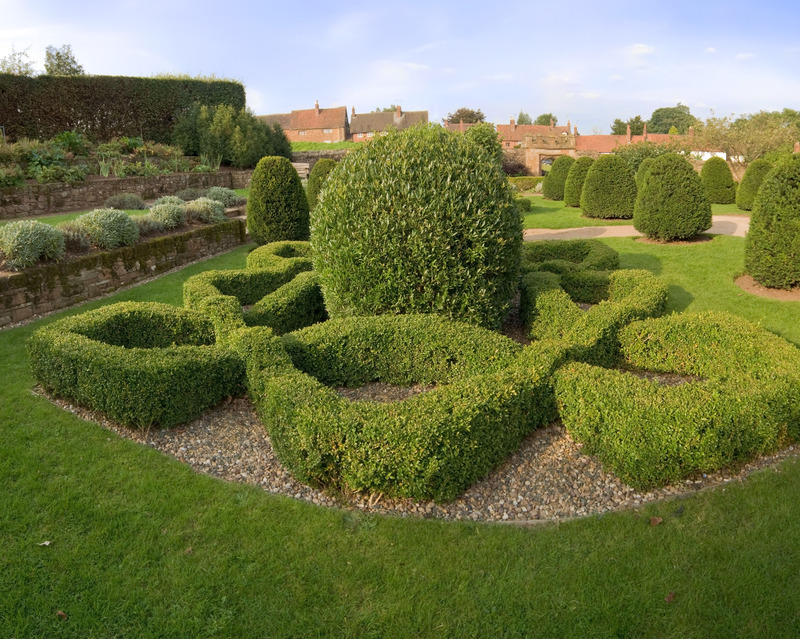Hedge Trimming Mastery: From Simple to Complex Shapes
Posted on 01/07/2025
Hedge Trimming Mastery: From Simple to Complex Shapes
Achieving hedge trimming mastery is not just about maintaining the tidy look of your garden. It's an art form that transforms ordinary shrubs into living sculptures and increases your landscape's curb appeal. Whether you are a home gardener or a seasoned landscaper, mastering the techniques of hedge shaping can take your outdoor space to the next level. In this comprehensive guide, we'll explore best practices, tools, and advanced techniques for shaping hedges, from straightforward maintenance trims to creating complex, eye-catching shapes.
Why Proper Hedge Trimming Matters
Proper hedge trimming goes beyond mere aesthetics--it fosters plant health, improves security, and can even benefit local ecosystems. Well-maintained hedges:
- Encourage healthy, robust growth
- Provide privacy and noise reduction
- Support biodiversity by offering shelter for birds and insects
- Enhance your property's value and visual appeal
Learning the nuances of hedge sculpting gives you the ability to unlock all these advantages.

Essential Tools for Mastering Hedge Trimming
Achieving precision in hedge trimming requires the right set of tools. Investing in quality equipment ensures clean cuts, plant health, and optimal results, especially when crafting intricate shapes.
Main Tools for Simple and Advanced Cuts
- Hand Shears: Perfect for close control and detail work, especially on small or young hedges.
- Hedge Trimmers (Manual and Powered): Ideal for maintaining long, even stretches.
- Long-Reach Trimmers: Useful for high or wide hedges that are hard to access.
- Topiary Shears: Essential for shaping topiary and complex sculptures.
- Loppers: Needed for removing thick or woody stems.
- String Line and Stakes: For creating straight lines and uniform curves in formal designs.
- Protective Gear: Including gloves, safety glasses, and, if using powered tools, ear defenders.
Tip: Sharpen your blades regularly for the cleanest cuts, which helps prevent disease and ensures a polished finish.
Mastering Basic Hedge Trimming Techniques
Before advancing to extravagant shapes, it's critical to master the basics of hedge pruning and shaping. Here's a step-by-step approach:
1. Preparing for the Job
- Inspect your hedge: Remove any rubbish or bird nests.
- Identify dead or diseased branches: Prune these out before shaping, as they can spread infection.
- Choose the right time: Different species require trimming at specific times. Generally, trim evergreens late spring and deciduous hedges in late winter or after flowering.
2. Achieving Straight Lines
To create straight, neat hedge lines, use a taut string tied to stakes at either end of the hedge. Trim along the line for a level top and sides. Step back frequently to check your work from different angles.
3. The Classic Taper Technique
Hedges should be slightly wider at the base than the top. This "taper" technique ensures sunlight reaches all foliage, promoting even growth. Aim for an angle of 10-15 degrees.
4. Maintenance Trims vs. Rejuvenation Cuts
- Maintenance trims: Light, frequent snipping to cut back fresh growth and keep the hedge compact.
- Rejuvenation trimming: More drastic pruning to revive overgrown or neglected hedges, often done over several seasons.
Remember: Always clean your blades with disinfectant when moving between plants to prevent the spread of disease.
Artistic Hedge Trimming: Moving Beyond the Basics
Once comfortable with basic hedge care, you can progress to creative, eye-catching shapes--turning your garden into a living gallery. Artistic hedge trimming, also known as topiary, ranges from basic geometric forms to elaborate animal or abstract designs.
Shaping Simple Geometric Forms
- Balls and Domes: Use a circular sweeping motion, eyeballing symmetry and frequently checking all sides.
- Squares and Rectangles: Rely on string lines and stakes for straight edges and right angles.
Crafting Advanced and Complex Styles
With patience and practice, topiary mastery allows you to create:
- Spirals: Begin with an upright cone of foliage. Mark a spiral guideline with string or chalk, then slowly trim along the line.
- Tiered Layers: Create multi-level designs by shaping each section before moving upwards.
- Animal or Figurative Topiary: Start with wire frames for support and guidance. Trim meticulously along edges, gradually training the plant to fill out intricate details.
Patience is key--shaping complex hedge designs may take several years of growth and careful management to reach perfection.
Best Hedges for Trimming and Shaping
Some species take to sculpting and shaping more readily than others. When planning advanced hedge trimming, consider these popular plants:
- Boxwood (Buxus sempervirens): Dense growth and small leaves make this a favorite for topiary.
- Yew (Taxus baccata): Flexible, dense, and long-lived; tolerates hard pruning.
- Privet (Ligustrum): Fast-growing and tolerant of heavy trimming.
- Holly (Ilex): Glossy leaf and dense form, though some species are prickly.
- Lonicera nitida: Good for smaller shapes and fine detail work.
Choose your hedging plants based on climate, soil, and the mature size required for your garden design.
Expert Tips for Hedge Trimming Mastery
To truly master hedge trimming, incorporate these pro tips into your garden routine:
- Step back frequently: Always view your work from a distance to ensure a balanced, symmetrical result.
- Trim when the hedge is dry: This helps prevent the spread of fungal diseases.
- Shape lightly but regularly: Frequent light trims encourage denser growth and easier shape maintenance.
- Replace and renew: Sometimes it's necessary to repair gaps or reshape sections by infill planting or training new growth.
- Respect wildlife: Check hedges for nesting birds and local regulations before heavy trimming, especially in spring and summer.
Proper fertilization and mulching supports healthy regrowth after trimming sessions.
The Science Behind Hedge Growth and Shaping
Understanding plant biology can elevate your hedge pruning success. Here are key physiological principles:
1. Apical Dominance
Most hedging species grow vigorously at the top (apex). Regular trimming encourages lateral (sideways) shoots, ensuring a bushier plant.
2. Response to Hard Pruning
Some species, such as yew and privet, regenerate readily after heavy cuts. Others, such as conifers, may not recover if pruned into bare wood.
3. Photosynthesis and Tapering
Allowing light to access the lower sections of the hedge through tapering prevents leggy, sparse growth at the base.
Common Hedge Trimming Mistakes to Avoid
Even experienced gardeners can make missteps. Watch out for these errors:
- Neglecting the base: Trimming the hedge too narrowly at the base starves lower leaves of light.
- Trimming at the wrong time: Pruning certain flowering hedges at the wrong period can remove next season's blooms.
- Cutting into old wood on conifers: Many conifers won't regrow from old, brown wood and will remain patchy.
- Poor tool maintenance: Dull blades lead to ragged cuts and can transmit diseases.
- Removing too much foliage at once: Severe cutting can shock the plant and stunt future growth.
Getting Started: A Step-by-Step Hedge Trimming Plan
- Assess and Research: Identify your hedge species and its ideal pruning time.
- Gather Equipment: Ensure tools are sharp, clean, and the right size for the job.
- Mark Outlines and Shapes: Use strings, frames, or guides for more advanced shapes.
- Trim Methodically: Work from the bottom up, shaping sides before addressing the top.
- Clean Up Debris: Remove clippings to prevent disease and give your finished work prominence.
- Step Back and Adjust: Make small corrections as needed for symmetry and polish.
- Monitor and Maintain: Inspect your hedge regularly for pests, disease, and shape maintenance.
Innovative Ideas for Creative Hedge Shapes
Feeling inspired to go beyond basic forms? Here are some creative hedge shaping concepts you might try:
- Maze Hedges: Create an interactive garden feature with winding paths for children and adults alike.
- Garden Dividers: Use hedge panels in a zigzag pattern for decorative and functional outdoor "rooms."
- Seasonal Artwork: Shape festive motifs (hearts, stars, animals) for special occasions.
- Living Sculptures: Design abstract waves, pyramids, or spirals as permanent garden art.

FAQs on Hedge Trimming and Shaping
How often should I trim my hedge?
Most fast-growing hedges benefit from trimming two to three times per growing season. Slower-growing or formal topiary may only need one careful cut per year.
Can I shape an old, overgrown hedge?
Yes, but rejuvenation may take several years, especially for intricate shapes. Remove a third of the old growth every season, and encourage healthy new shoots for best results.
What's the best time of year for advanced shaping?
For most evergreens, late spring or early summer is ideal. Avoid hard pruning during autumn, as new shoots may not harden off before winter.
Can any hedge be shaped into topiary?
Not all species are suitable. Choose dense, small-leaved varieties for the sharpest detail and ease of maintenance.
Conclusion: Unlock Your Creative Potential with Hedge Trimming Mastery
Hedge trimming, whether basic or advanced, is a skill that combines horticultural knowledge with artistic flair. With the right tools, techniques, and creative inspiration, you can transform any ordinary boundary into a green masterpiece. Remember to practice, observe, and adapt your approach for your specific plant species and garden goals. With patience and dedication, hedge trimming mastery is within your reach!
Ready to take your garden to new heights? Start shaping, and let the living art unfold!

